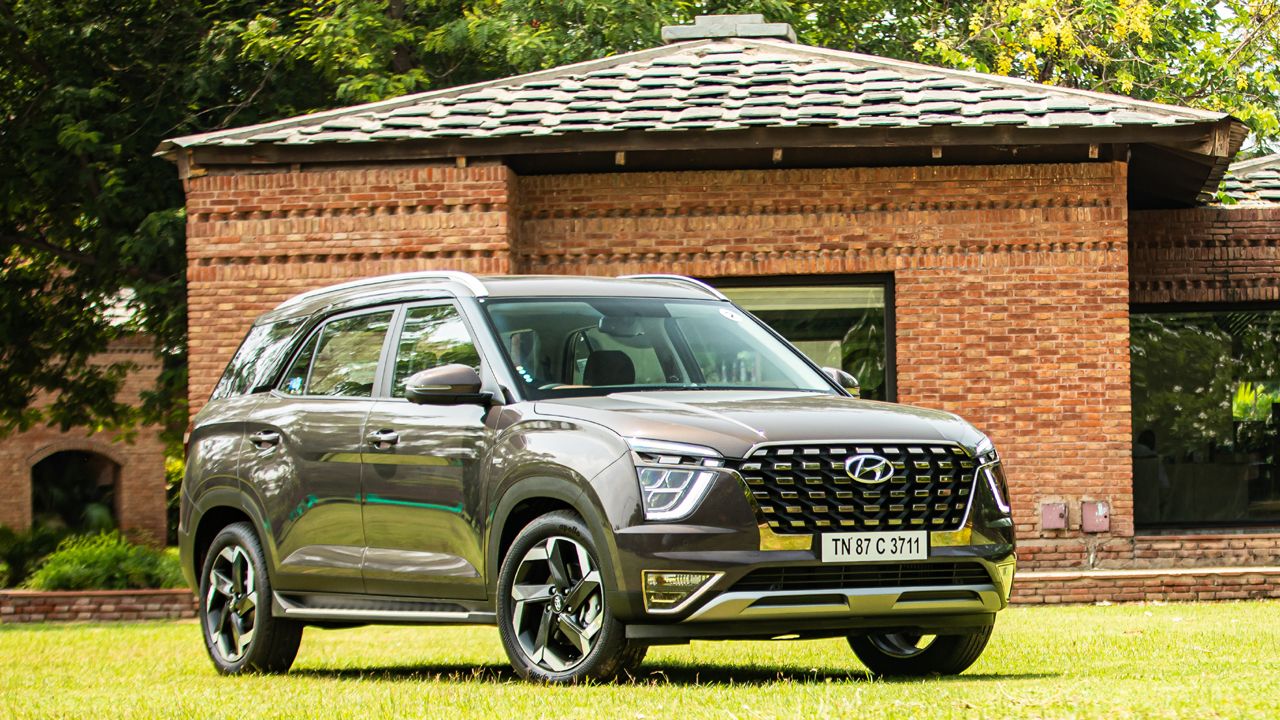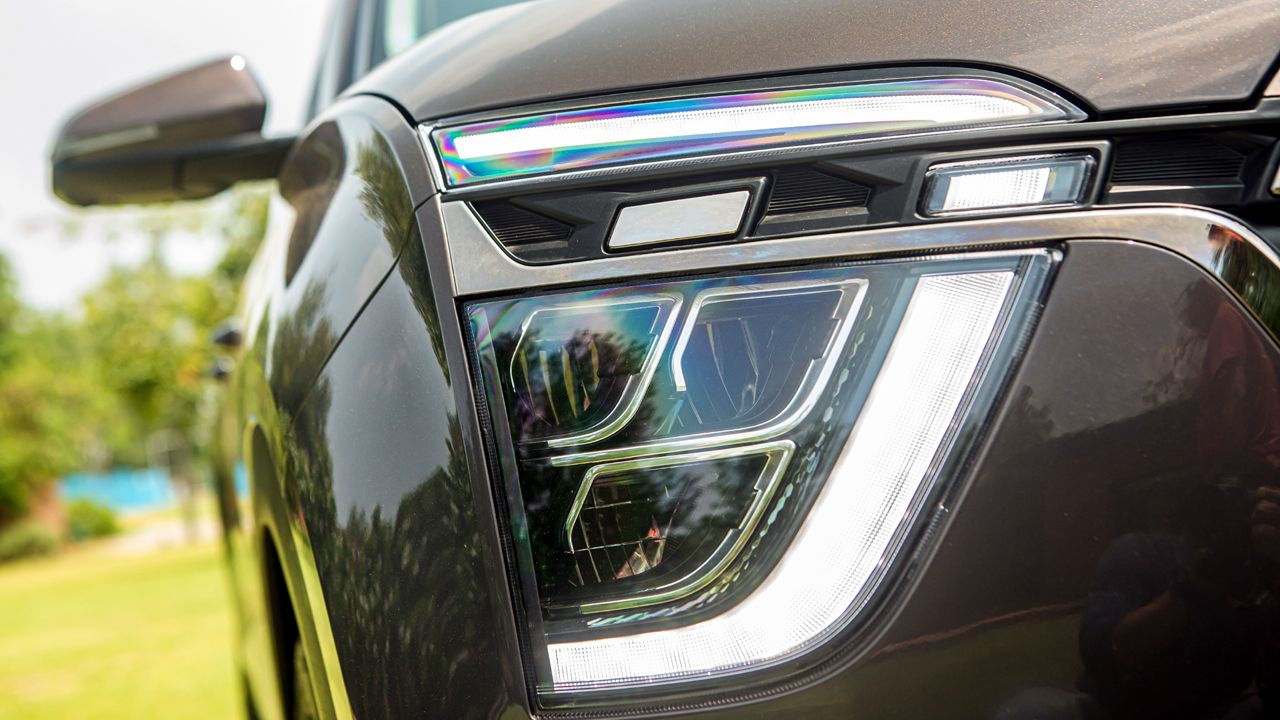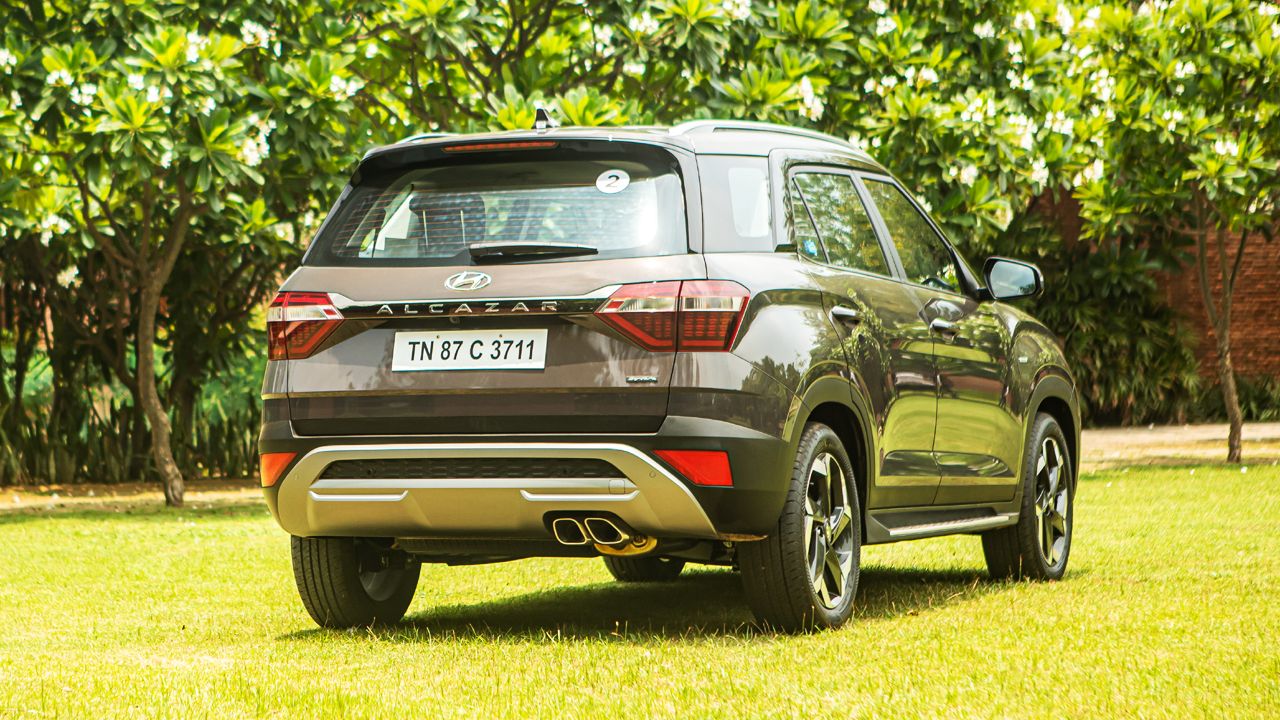
Hyundai Alcazar Review: First Drive
It’s not just a length extension to the chassis and wheelbase that the Hyundai Alcazar offers, but it also offers a bigger petrol engine, lots of new features and a new seating arrangement. We spent a whole day testing it to find out how it fares as a product.

Having tasted unprecedented success with the Creta and the Venue, Hyundai is expanding its SUV line up, and with the Alcazar, plunges headfirst into the fast-growing 3-row SUV segment. Question is, does the Alcazar offer enough to customers to tempt them from not just the competition, but also, its smaller sibling, the Creta?
Over the period of the past few years, much of the landscape of the Indian automotive market has changed quite significantly. For example, in a market that was known for its devotion to hatchbacks, SUVs have been ruling the roost when it comes to where the growth in auto sales is coming from. The Indian customer has taken a liking to SUVs and the ever-increasing sales figures of SUVs prove that point, no matter which segment you consider. At the same time, Hyundai has been at the epicentre of this success with its SUV lineup. Beginning with the Creta’s first launch in 2015, Hyundai’s SUV lineup has been breaking records left, right and centre.
However, over the past couple of years, while mid-sized SUVs have been the biggest sellers, a new segment has slowly emerged – the 3 row SUV with 6 or 7-seater options. For almost two decades, the sole ‘affordable’ option in this segment was the Toyota Innova, which is a bluechip brand in itself. But, over the past couple of years, there have emerged more options, such as the MG Hector Plus and the newly launched Tata Safari.

New contender
It comes as no surprise that Hyundai has decided to enter this new segment with a new product based on the same platform as the Creta. Nomenclature-d as the ‘Alcazar’ – a Spanish word for castles – Hyundai is positioning this new SUV as a new standard of luxury in its segment. And it’s not just a length extension to the chassis and wheelbase that the Alcazar offers, but it also offers a bigger petrol engine, lots of new features and a new seating arrangement. Naturally, being a Hyundai product, the Alcazar has generated a lot of interest, so we spent a whole day testing it to find out how it fares as a product, and also in reference to its competition.
Improvements in design
Of course, one of the biggest aspects of the second-generation Creta has been its polarizing design, and this is something that the Alcazar tackles head-on and does a good job of it. Learning from their experience, this time, Hyundai designers have given the Alcazar a bold front grille which is not just large, but with its black chrome elements, looks quite imposing. The integration of the headlights and the front bumper skid plate is also well done, and the whole front of the Alcazar is impressively executed, all the while giving the SUV a unique identity.

Viewed in profile, the design work on the Alcazar is even more impressive, with the 200mm length extension giving the overall shape of the SUV a lovely balance with limited overhangs. Also helping here are the 18-inch alloys, which give the Alcazar an excellent stance, and the strong shoulder lines in the front and rear three-quarters serve a good purpose of giving the side of the body some heft and style. The addition of the glass window in the C-pillar also provides balance to the elongated design and helps visibility to occupants seated in the 3rd row.
It’s the rear though, that for me, is the biggest change and the most impressive one. Gone are the strange and disjointed lines of the Creta and in comes a cohesive design that features a good-looking pair of LED taillamps which is stitched together by a nicely executed piece of black chrome which is also emblazoned with the ‘Alcazar’ name. Also noticeable are the Hyundai trademark twin tailpipes and the faux skid plate. Some of you might think that the rear end of the Alcazar resembles the Ford Endeavour – I do too – and I think that’s no bad thing, and this is a handsome upgrade to the Creta’s rear-end design.

Three rows
Of course, the party piece of the Alcazar is always going to the interior seating options. Designed specifically for customers looking for 3 rows of seating, the Alcazar also features numerous other upgrades to its interiors. First up, you notice the dual-tone interiors, which now feature a terracotta brown and black colour theme carried all over the interiors. I think the colour combo is pretty well done and works well. To people familiar with the Creta, the interiors won’t seem that much different, but there are some major changes here. For example, the instrument console now offers a 10.25-inch digital display, which has beautifully designed interfaces, terrific resolution and looks simply fantastic with its interchangeable dials that you can select by changing the drive mode of the car. Interestingly, the Alcazar offer blind-spot assist cameras in both rear-view mirrors, the display of which is also terrifically integrated into the digital instrument cluster and is a highly useful feature. Another highlight of the Alcazar is the 360-degrees camera system which is very well integrated into the entertainment system and works terrifically well.

Getting into the 2nd row in our 6-seater version, the first thing you notice is the centre armrest. Mounted between the two captains’ seats, the armrest is fixed, and therefore, entry into the 3rd row is only possible by folding the seats of the 2nd row. Interestingly, the armrest does offer a second wireless charging pad – the first one is mounted up ahead in the dash – and this one in the backseat is going to be a great touch for rear-seat passengers.
Coming back to the 2nd-row seat, and I have to say I was a bit disappointed with the seat. While it feels plush and well-finished, the under-thigh support of the seat could be better, and so could some of the plastics. The picnic table mounted in front of the two seats feels sturdy and has a slot to hold an iPad or an android tablet, but it features hard plastic and I think it could get scratched easily. But yes, the positioning of the armrest is perfect for both seats, and the 2nd row is largely a comfortable place to be. Also, the 2nd row has a sliding adjustment, and can be adjusted for legroom – but even at its furthest setting – while I at 5’9” was comfortable, anyone above 6’ will have a legroom problem.
This brings us to the biggest test, the space in the 3rd row. Now, with its one-touch tilt-and-fold function, getting into the 3rd row is actually quite easy and the 40mm increase in height of the Alcazar certainly helps here. But, once I got in the seat, I found that the under-thigh support in the 3rd now non-existent and you also sit with your legs raised too high. Yes, there is no claustrophobia with the C-pillar window, and it was comfortable with its own dedicated blower and fan control for the 3rd row, coupled with a couple of USB-charging ports, but overall, if you’re anything above average height, you’re going to struggle for legroom in the 3rd row. Like I said in our video review, the Alcazar can certainly seat 6 people, but preferably, that group of 6 should be 4 adults and 2 children.
On the road
With its increase in length and wheelbase, naturally, the weight of the Alcazar has also gone up and that means needing more firepower to move quickly on our roads. And Hyundai has answered that demand partially. On the petrol engine front, the Alcazar offers a manually aspirated 2.0-litre petrol engine with 157bhp and the diesel shared with the Creta, the 113bhp, 1.5-litre diesel. Now, I’ve briefly driven the Alcazar powered by the petrol engine, and the big 2.0-litre feels perfectly suited to the Alcazar’s role, providing a plush, comfortable driving experience with more than enough power needed for everyday driving.

The diesel engine, on the other hand, does feel smaller than what is required by an SUV of this size, and to make things better our test car was the diesel automatic, which gives me the perfect opportunity to answer the question everyone is asking now ‘How good is the diesel engine’s performance?’ Well, to be honest, I was kind of surprised by the performance of the diesel engine. Sure, I know it’s the same engine that powers the Creta and should feel underpowered in this application, but truth be told, it doesn’t feel underpowered and does the job quite well. It has enough grunt for acceleration, is able to keep a decent pace in both highway and urban traffic conditions and doesn’t seem like it’s wheezing for breath – at the same time, offering excellent refinement and fuel efficiency.
But, let’s be honest, while it does the job, and does it well, the diesel engine on the Alcazar doesn’t feel particularly powerful. It will do the job if you’re chauffeured, or not looking to set drag strip times, but if you’re a driving enthusiast, you will miss the extra torque and power of a bigger engine, there’s no denying that. You will miss the extra torque and easy cruise-ability of a larger engine, a quality that other Hyundai diesel engines offer.
Ride on point
Another improvement in the Alcazar over the Creta has to be the suspension setup. With the increase in dimensions and weight, the engineers at Hyundai have stiffened the suspension and tied it up a lot better compared to the Creta, which is much softer. As a result, the Alcazar is much more satisfying to drive, the suspension responds terrifically to both bad roads and fast highways, and the whole package seems to be much more cohesive in operation. Even if you hit choppy stretches of tarmac at high speeds, the Alcazar’s suspension makes easy work of it, giving you much more confidence of the car’s driving dynamics.

In conclusion
The Alcazar, then, offers a mixed proposition as a product. It excels in many areas – the design is very well executed, the interior fit-and-finish is good, and as always, the standard equipment levels are mind-boggling – but it lags behind in some areas. For instance, at 4.5-metres in length, it does remain markedly shorter than both the Hector Plus and the Safari. That naturally means that space in both the 2nd and 3rd row is compromised. Sure, most Indians will fit just fine, but if you’re on the taller side than the average Indian, then yes, do demo the car before you sign the dotted line. Secondly, the 1.5-litre diesel engine, while adequate, does feel a tad underwhelming. Compare it to the Safari’s 168bhp and suddenly the figures of the Alcazar seem puny – but then again, the Safari also weighs 400kgs more – which means the Alcazar’s performance is satisfactory, but not explosive.

In effect, the Alcazar offers a premium experience – both inside the cabin and while driving – but is not the perfect product that we are used to from Hyundai. If the interior room is not an issue, I recommend you give the Alcazar a look, for it might serve your purpose of a 3-row SUV with a terrific feature set, at a decent price level, but with a few caveats.
Read more:
Engine: 1,493cc / 4-Cylinder / Turbocharged
Fuel: Diesel
Transmission: 6-Speed Manual / 6-Speed Automatic / Front-Wheel Drive
Power: 113.4bhp @ 4,000rpm
Torque: 250Nm @ 1,500 – 2,750rpm
X-Factor: With its handsome design, and excellent pricing, the Alcazar challenges the competition, but has some compromises.
| Pros • Good design • High levels of standard equipment |
Cons
|























Write your Comment on